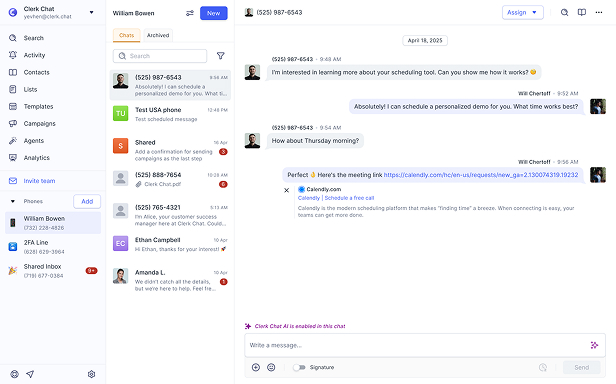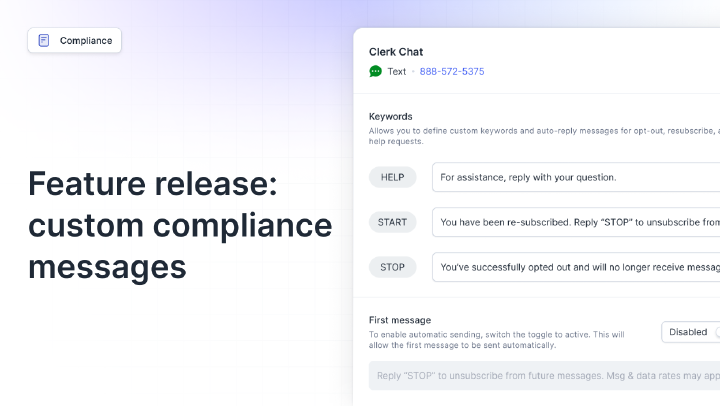Conversational AI
[ˌkɑːnvərˈseɪʃənl ˌeɪˈaɪ]Conversational AI refers to technologies that enable computers to engage in natural, human-like dialogues using text or voice inputs.
It leverages natural language processing and machine learning to interpret queries, manage conversations, and generate responses. This facilitates seamless interactions in customer service and beyond.
Why Conversational AI Matters
Conversational AI transforms customer interactions by providing instant, personalized responses across channels, which elevates satisfaction and loyalty.
In competitive markets, it allows round-the-clock support without proportional staff increases, directly impacting retention through efficient query resolution. Businesses report reduced response times, leading to higher conversion rates in sales and support scenarios.
It also gathers valuable insights from dialogues, informing product improvements and marketing strategies. By analyzing sentiment and patterns, companies identify pain points early, preventing churn and fostering proactive engagement.
This data-driven approach contributes to revenue growth, with some sectors seeing 20-30% uplifts in efficiency. Overall, Conversational AI bridges gaps in traditional communication, creating meaningful connections that drive long-term value.
How Conversational AI Works
Conversational AI functions through a series of interconnected components that process and respond to user inputs in real time.
Input Reception: The system captures user queries via text from messaging apps or speech through voice interfaces, converting audio to text if needed using automatic speech recognition.
Natural Language Understanding (NLU): It breaks down the input to extract intent, entities, and context, identifying what the user wants and key details like names or dates.
Dialogue Management: This core module tracks conversation state, decides the next action based on rules or ML models, and handles multi-turn exchanges to maintain coherence.
Natural Language Generation (NLG): It crafts a response in natural language, drawing from knowledge bases or generative models to ensure relevance and tone alignment.
Output Delivery: The response is sent back in the appropriate format, such as text in SMS or synthesized speech.
Learning and Feedback: Post-interaction, the system logs data for ML algorithms to refine models, improving accuracy over time through reinforcement or supervised learning.
In practice, for business texting, it integrates with platforms to automate replies, qualify leads, or sync contacts, scaling to handle thousands of simultaneous conversations without degradation.
Best Practices with Conversational AI
Curate High-Quality Training Data: Gather diverse, representative datasets from real interactions to train models, minimizing biases and hallucinations for reliable outputs.
Incorporate Human Escalation Paths: Set thresholds for complexity where AI hands off to agents, preserving quality in sensitive or ambiguous cases.
Prioritize User Privacy and Consent: Implement data encryption and clear policies for handling personal information, complying with regulations to sustain trust.
Conduct Regular Testing and Iteration: Simulate varied scenarios to evaluate performance, then update based on metrics like accuracy and user feedback.
Personalize Interactions Dynamically: Use context from past dialogues and user profiles to tailor responses, increasing relevance and engagement.
Monitor Sentiment in Real Time: Apply analysis to detect frustration, allowing proactive adjustments or escalations to improve outcomes.
Integrate Across Channels Seamlessly: Ensure consistent experiences in SMS, voice, or web, with state persistence for uninterrupted conversations.
Real world examples
Common misconceptions
It handles routine queries to free agents for complex issues, combining automation with human empathy for balanced service.
It requires extensive data training and ongoing refinement to interpret context, slang, and nuances accurately.
It extends to voice assistants, SMS, social media, and IVR systems across various channels.
It processes sensitive data, necessitating strict compliance measures to protect user information and build trust.
Through machine learning, it improves over time by analyzing past conversations to enhance response accuracy.
Related terms
In this article:
Ready to use your business number for text messaging?
Thousands of businesses are already experiencing the power of conversational messaging through SMS. Join us. Free trial and paid tiers available.
Get StartedFAQ
Have questions? We've got answers.
Find what you need quickly and clearly with our most frequently asked questions.
Conversational AI uses NLP and ML to simulate human-like dialogues through text or speech. It applies in customer support for query resolution, personalization, and automation. Platforms integrate it for 24/7 availability, achieving open rates above 90% in messaging. It processes intents, generates responses, and learns from interactions to refine accuracy, making it key for scalable communication.
Begin by selecting a platform with NLP capabilities. Train models on domain-specific data, define intents, and build dialogue flows. Integrate via APIs into channels like SMS or apps. Test with user scenarios, deploy, and monitor performance. Tools like Clerk Chat simplify this by offering pre-built AI for texting, enabling quick setup with existing numbers.
Initial costs cover platform subscriptions from $20/month, plus development for custom models. Ongoing expenses include data storage and per-interaction fees at $0.01-0.05. Resources involve data scientists for training (weeks initially) and IT for integration. ROI comes from reduced agent workload, with some firms seeing 30% cost savings in support.
Unlike rule-based bots limited to predefined scripts, Conversational AI uses ML to handle unstructured queries and context. It adapts dynamically, reducing errors from 50% in rules to under 10%. While rule systems are cheaper for simple tasks, AI excels in complex, personalized interactions, though it requires more data for training.
Adhere to GDPR and TCPA for consent in data handling and messaging. Ensure transparency in AI use, log interactions for audits, and avoid biases in training data. In the US, register for 10DLC if using SMS. Violations can lead to fines; reputable systems include opt-out features and secure data processing to mitigate risks.
Train on diverse datasets for accuracy. Design fallback to human agents for unresolved queries. Personalize responses using user data. Analyze sentiment to gauge satisfaction. Update models regularly with new interactions. In texting, keep messages concise and channel-appropriate to boost engagement rates up to 98%.




